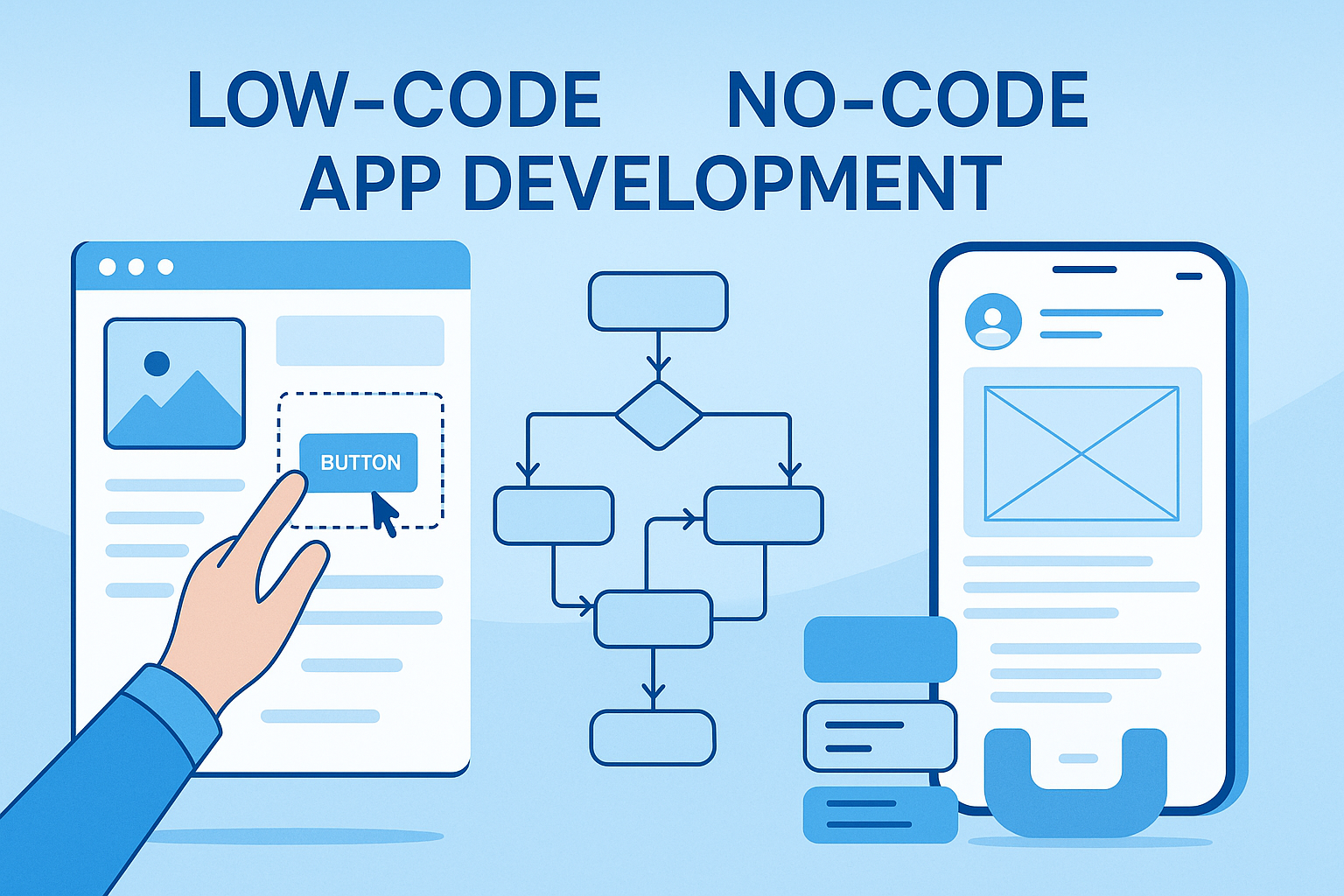
In today’s fast-paced digital era, businesses are continuously seeking ways to accelerate development and reduce the gap between idea conception and product launch. Enter low-code and no-code platforms, game-changers revolutionizing app development by empowering even non-technical individuals to create sophisticated apps with ease.
Why Low‑Code & No‑Code Platforms Are Shaping 2025 App Development
Low-code and no-code platforms use visual development environments to allow users to build apps through intuitive drag-and-drop interfaces, reducing the dependency on traditional coding skills. These platforms democratize app development, enabling faster prototyping, reduced costs, and greater agility.
Why Businesses are Embracing Low-Code and No-Code
1. Accelerated Time-to-Market
Speed is critical in the tech industry. Low-code and no-code platforms drastically cut development time by allowing teams to rapidly prototype and iterate, launching functional applications within weeks rather than months.
2. Cost-Efficiency
Reducing reliance on specialized developers, businesses save significant resources in development and maintenance costs, channeling these savings into other critical operations.
3. Increased Accessibility
Teams across all departments, regardless of technical expertise, can actively participate in app creation, fostering innovation and collaboration within organizations.
Popular Use Cases
-
Internal Tools: Quick development of dashboards, workflows, and admin panels.
-
Customer-facing Apps: Responsive mobile and web applications delivered faster.
-
Automation: Streamlining repetitive processes through seamless integration with existing software.
Challenges and Considerations
While incredibly powerful, it’s important to recognize scenarios where traditional coding remains essential. Complex applications requiring highly customized functionalities or extensive backend integration may still necessitate conventional development methods.
The Road Ahead
According to Gartner, by 2025, nearly 70% of new applications will leverage low-code or no-code technologies, illustrating the industry’s confidence in their growing capabilities and reliability.
Businesses must strategically integrate low-code/no-code solutions to complement traditional app development, creating a robust digital ecosystem that accelerates innovation and ensures sustained competitive advantage.





No comment yet, add your voice below!